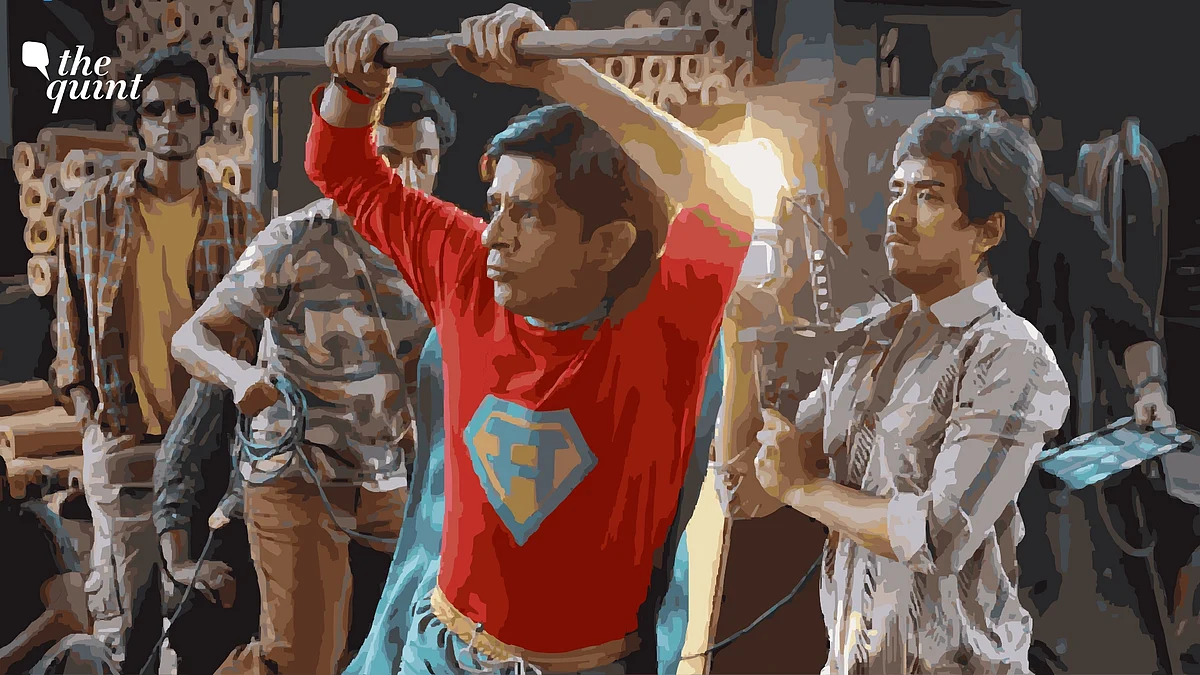
In a World of 'Chhaava', Be a 'Superboys of Malegaon'
'Superboys of Malegaon' shows Muslims must not only be villains or victims in Bollywood. They can just be humans.

advertisement
Located on the banks of the Girna River, the small town of Malegaon in Maharashtra's Nashik district accommodates many divides. It is divided by the Mosam River which snakes through the town's centre, cleaving it in two halves. On one side of the divide live Muslims, making up nearly 70 per cent of the population. On the other side live Hindus.
Every few years or decades, the town becomes divided on the lines of religion. Since 1963, six major communal riots have taken place in this town. After the demolition of Babri Masjid, when communal riots were tearing through Maharashtra in the bitter winter of 1992-93, Malegaon saw the worst of it. In 2006, a terror blast on a train once again left the town imploding on divisions.
Superboys of Malegaon, however, is not a film about divisions.
It tells the story of Malegaon itself, a town that continues to struggle against its own apparent destiny.
Representation Matters
Directed by Reema Kagti, Superboys of Malegaon takes Malegaon’s OG filmmaker’s legacy seriously and actually manages to create a living example of what Nasir tried to prove with his works: that near-zero budget films can indeed be made, directed, edited, and even acted in, by youngsters armed with just their passion.
While there are many praiseworthy points about Superboys, the most endearing, perhaps, is its treatment of Muslim characters. Set in the late 1990s, the film depicts a turbulent span of 13 years till 2003 as it tells Nasir's story and his rag-tag film crew, who set about to make a parody of Hollywood’s Superman films to amuse a dying friend.
There’s also the nod to feminism through Nasir’s wife Shabeena, who funds his films but also demands credit.
Indeed, in the tiring haze of hyper-masculine protagonists in films like Chhaava that often (and quite purposely) blend the lines between myth, history and propaganda, Superboys revels in its freshness and innocence. After a long time, here’s a film that introduces the audience to a cheerful and aspiring bunch of Muslim youth in a film that isn’t overtly centred on their religious identity. The characters are real, belonging to the so-called ‘Tier-2 India’ and who revel in their semi-educated, unsophisticated glory.
The Muslim characters in Superboys aren’t the usual gun-toting, bomb-making, surma-eyed variety of villains popularised as ‘terrorists’ or ‘separatists’ by mainstream, big-budget Bollywood films.
But neither are they the oppressed, victimised faces of communal fallout and majoritarian hatred summing up the other side of the representation spectrum. Does it matter that they are Muslim or Hindu? Not to them, at least.
What Should Be Known About Malegaon
The fact that the film takes place in the beleaguered Malegaon adds to the subliminal messaging. Known for its power loom industry, Malegaon is home to a large, working-class Muslim population. They work as weavers in the 84,000 power looms, owned mostly by the Hindus.
This film is not only a tribute to Nasir Shaikh and Malegaon but also a very powerful tribute to another film — its award-winning predecessor and muse, Supermen of Malegaon (2008), directed by Faiza Ahmad Khan.
Reel to Real
But Malegaon’s passion for filmmaking has not translated into opportunities for work and income for the city. Today, in Malegaon, a worker earns less than Rs 2,000 a month. Over time, the town expanded to accommodate the growing number of power looms by throwing up fetid, overcrowded clusters of semi-pucca houses, with no electricity, no water supply, no toilet facilities, and lined by overflowing drains.
It exists as an underbelly of the prosperous Maharashtra, a state marked by some of the sharpest economic disparities in the country. When a group of Malegaon’s residents recently returned the cheques given to them by a visiting delegation of Congress leaders, including the state’s chief minister, it reflected widespread public alienation and resentment over the monumental neglect accorded to a town where even a decent civil hospital does not exist to date.
Despite its disreputable fame in communal violence, a middle-aged lady who spent her entire childhood in Malegaon spoke with The Quint (without wishing to be named), insisting that most of the ‘stories’ of communal conflicts in Malegaon are usually the creations of political leaders, usually affiliated to majoritarian right-wing groups.
In that sense, a film like Superboys of Malegaon manages to bring joy to the people of Malegaon not just with its funny spoofs but also with its depiction of normalcy. For that, it deserves three thumbs up.
(Shoma A Chatterji is an Indian film scholar, author and freelance journalist. This is an opinion article, and the views expressed above are the author’s own. The Quint neither endorses nor is responsible for them.)
- Access to all paywalled content on site
- Ad-free experience across The Quint
- Early previews of our Special Projects
Published: undefined